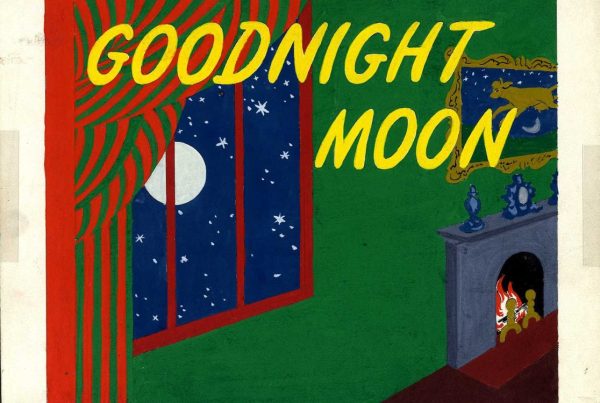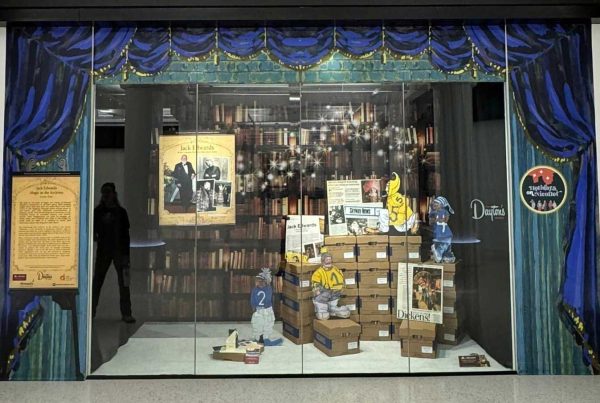Thanks to Courtney Johnson for writing this post! Courtney is a student in the Youth Development Leadership program. She joined the program in 2015 and will receive her degree this summer.
Courtney and the other students in the Organizational Approaches to Youth Development course visited Archives and Special Collections in October 2016. The students worked together to build competency for analyzing historical documents and then explored materials from archival collections to a develop a research paper and class presentation.
Courtney decided to research the Project Girl records that document a study of teen girls conducted in the 1970s. She recreated the study by interviewing women who were teens in the 1970s about their current and past experiences.
The class session was taught by Linnea Anderson, Archivist of the Social Welfare History Archives, and Ryan Bean, Reference and Outreach Archivist in the Kautz Family YMCA Archives, and is just one of many classes taught in Archives and Special Collections each semester.
Thank you to Professor Jennifer Skuza for being a proponent of the archives and for giving her students a chance to experience the collections each year.
—Linnea Anderson
By Courtney Johnson
YDL Graduate Student
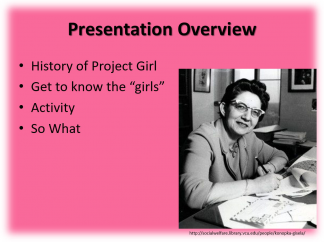 My name is Courtney Johnson and I am a second-year student in the Youth Development Leadership master’s program. My field area of focuses/passions are around rural youth, quality, and engagement. I am the Itasca County Community Engagement Coordinator within University of Minnesota Extension, Center of Youth Development, and previously was the Crow Wing County 4-H Program Coordinator.
My name is Courtney Johnson and I am a second-year student in the Youth Development Leadership master’s program. My field area of focuses/passions are around rural youth, quality, and engagement. I am the Itasca County Community Engagement Coordinator within University of Minnesota Extension, Center of Youth Development, and previously was the Crow Wing County 4-H Program Coordinator.
In the fall of 2016 I was in Jennifer Skuza’s course, YOST 5956 Organizational Approaches to Youth Development. For this class we were assigned to complete a historical research project around youth development. One of the suggestions was to use archives housed in the U of M’s Elmer L. Andersen Library. For my project I focused on Project Girl. This project was conducted in the early 1970’s and led by the U of M’s very own Gisela Konopka.
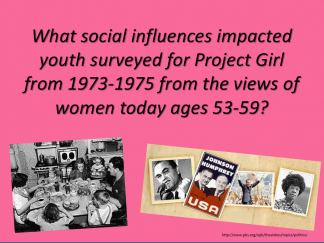 I spent significant time getting to know the archives for Project Girl. For my historical research project, I wanted to bring the past to life around rural youth. It was suggested by my professor to look into the Project Girl records and consider incorporating an interview into my project. After I got into the Project Girl archives I thought it may be interesting to turn my project into a comparison/reflection study using multiple interviews. At that time I was able to boil my research question down to: What social influences impacted youth surveyed for Project Girl from 1973-1975 from the views of women today ages 53-59?
I spent significant time getting to know the archives for Project Girl. For my historical research project, I wanted to bring the past to life around rural youth. It was suggested by my professor to look into the Project Girl records and consider incorporating an interview into my project. After I got into the Project Girl archives I thought it may be interesting to turn my project into a comparison/reflection study using multiple interviews. At that time I was able to boil my research question down to: What social influences impacted youth surveyed for Project Girl from 1973-1975 from the views of women today ages 53-59?
I was strategic in finding women who grew up in rural settings, much like the participants of Project Girl. I loved interviewing the women — it was fun! Research should be fun! Not only was it fun, but for someone who was not alive during the time of Project Girl, hearing first-hand accounts from the women gave me context about that time in history — along with providing me rich data around my research question. I think for researchers and especially students, it can be hard to put historical data and research into real life. By conducting the interviews I was able to do that and feel more connected to the hard work and dedication that went into collecting the original study.
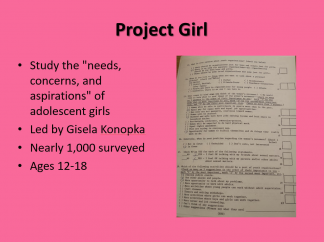 I would encourage anyone to dig into the Project Girl records. There are a lot of fun ways you could take the data and information provided. At the beginning of my project I didn’t think I would be focusing on women’s issues and the social influences of women 40+ years ago, but the archives had other plans for me. Anyone interested in Gisela Konopka’s work, youth organizations, evaluation measures, the United States in 1970’s, women’s issues, or social issues should consider taking some time to look into the Project Girl’s archive. I would love to see a comparison study come out on the girls of 1973-1975 vs. girls of today!
I would encourage anyone to dig into the Project Girl records. There are a lot of fun ways you could take the data and information provided. At the beginning of my project I didn’t think I would be focusing on women’s issues and the social influences of women 40+ years ago, but the archives had other plans for me. Anyone interested in Gisela Konopka’s work, youth organizations, evaluation measures, the United States in 1970’s, women’s issues, or social issues should consider taking some time to look into the Project Girl’s archive. I would love to see a comparison study come out on the girls of 1973-1975 vs. girls of today!
I knew I needed to take a focused approach to the archives and my project — otherwise I would have not done the data or myself justice. By holding myself to my research question I was able to be successful. Let me tell you it wasn’t easy with all the archives had to offer! From the moment we walked into the archives I knew I was going to enjoy this project. I am a kind of person who could sit all day in someone else’s grandma’s basement looking through old newspapers, Christmas cards etc.
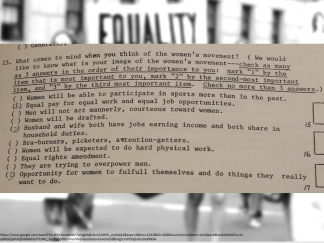 However, what took me by surprise was the sheer volume of records available to me — just on Project Girl. I had to limit myself for the project’s sake and my sanity so I could stay on course. I will admit that using the archives was a challenge for me because I commute over two hours for my weekly class, so adding this additional hurdle was tough at times. I only went to the archives twice: when we were introduced to the library and once on my own. I leaned heavily on the photographs I was able to take, writing notes, and information on the U of M Libraries website. I wish I would have been able to play around in the archives more because of all of the rich information.
However, what took me by surprise was the sheer volume of records available to me — just on Project Girl. I had to limit myself for the project’s sake and my sanity so I could stay on course. I will admit that using the archives was a challenge for me because I commute over two hours for my weekly class, so adding this additional hurdle was tough at times. I only went to the archives twice: when we were introduced to the library and once on my own. I leaned heavily on the photographs I was able to take, writing notes, and information on the U of M Libraries website. I wish I would have been able to play around in the archives more because of all of the rich information.
I truly enjoyed my time using the archives and working on Project Girl. I think it is important for us now in the present to reflect on the past to plan for the future. I hope I was successful in doing that through my research on Project Girl and I hope I won’t be the last for this archived project; it is a true U of M gem.


